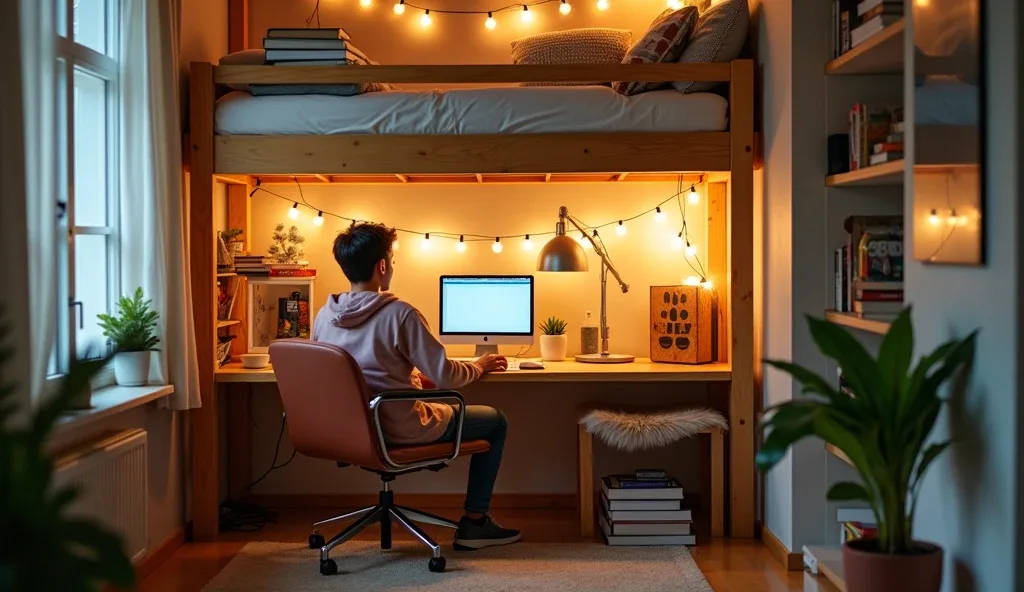Let’s be honest—we’ve all walked into our “room” and wondered if the real estate agent was being generous calling it anything more than a glorified closet. You know the feeling: staring at walls that seem to close in on you while your stuff multiplies like rabbits in a space the size of a shoebox.
Meanwhile, you’re scrolling through those picture-perfect tiny home tours on Instagram, feeling simultaneously inspired and completely defeated. How do these people make 200 square feet look like a luxury penthouse while your space feels cramped with just a bed and a dresser?
But here’s the thing about tiny spaces: they’re not limitations waiting to crush your design dreams—they’re puzzles begging to be solved with creativity and vision. When you crack that code? Pure magic happens. The kind of jaw-dropping, “how-did-they-fit-all-that-in-there” transformation that makes people stop and stare.
Whether you’re dealing with a dorm room, a studio apartment, or just a challenging corner of your home, these ingenious makeover ideas will help you create a space so functional and beautiful that size becomes completely irrelevant.
Master the Tiny Space Mindset Before You Start
Before we dive into these incredible transformations, let’s talk about what actually makes a small space feel expansive and intentional versus cramped and chaotic.
Think Vertically First – Floor space is precious, but wall and ceiling space is often completely underutilized. Every vertical inch is potential storage or function.
Embrace Multi-Purpose Everything – In tiny spaces, furniture that serves only one purpose is a luxury you can’t afford. Every piece should work overtime.
Light Is Your Secret Weapon – Proper lighting can make any space feel twice as large. Dark corners make rooms feel smaller than they actually are.
Organization Creates Space – Clutter makes any room feel cramped, but in tiny spaces, it’s absolutely suffocating. Systems matter more than square footage.
Think Like a Micro-Living Expert
The most successful tiny space transformations understand that every design decision should maximize both function and visual impact simultaneously.
Start with Your Non-Negotiables – What do you absolutely need this space to do? Sleep, work, store clothes, entertain? Build your design around these essential functions first.
Plan Traffic Flow Carefully – In tiny spaces, every step matters. Make sure you can move through your space comfortably without navigating an obstacle course.
Create Visual Continuity – Using consistent colors and materials throughout makes small spaces feel larger and more cohesive rather than choppy and divided.
Invest in Custom Solutions – Standard furniture wasn’t designed for your specific tiny space. Custom or adaptable pieces will always work better than trying to force regular furniture to fit.
Understanding Small Space Psychology
There’s real science behind why certain design choices make tiny spaces feel comfortable and functional rather than claustrophobic and frustrating.
Mirrors Create Psychological Space – Your brain interprets reflections as additional space, making rooms feel significantly larger than their actual dimensions.
Light Colors Expand Boundaries – Light, neutral colors reflect more light and make walls seem to recede, creating the illusion of more space.
Vertical Lines Draw the Eye Up – Floor-to-ceiling elements make ceilings appear higher and create the impression of more vertical space.
Hidden Storage Reduces Visual Clutter – When you can’t see stored items, your brain doesn’t process them as taking up space, making rooms feel cleaner and larger.
15 Tiny Room Ideas That Maximize Every Inch
The Disappearing Act: Murphy Bed Magic
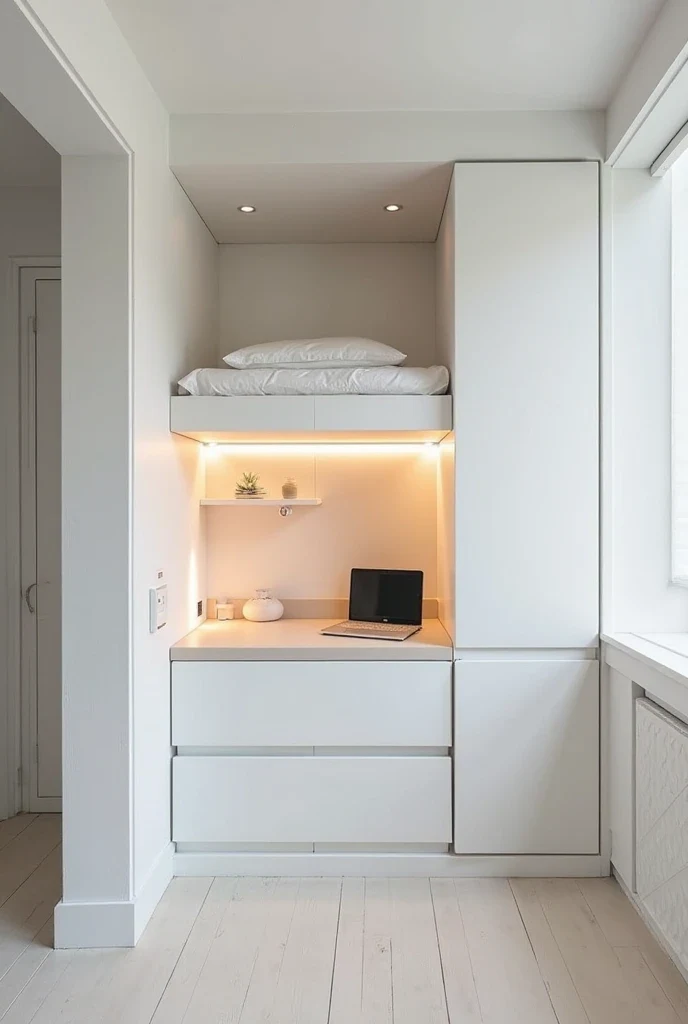
Picture your tiny room transformed into the ultimate space-saving haven with a sleek Murphy bed that literally vanishes into the wall during the day, revealing a clean workspace underneath with a fold-down desk, built-in shelving, and LED lighting that adjusts to each function. By night, the bed folds down to create a cozy sleeping area that occupies the exact same footprint.
What makes this solution so brilliant is the complete transformation it offers. You’re not just saving space—you’re creating two entirely different rooms that occupy the same square footage. The built-in storage compartments and integrated lighting make every detail work toward maximum functionality.
Space-saving secret: Choose a Murphy bed system with integrated storage and ensure the desk surface is large enough for your daily work needs when the bed is stored.
The Secret Under-Stair Sanctuary
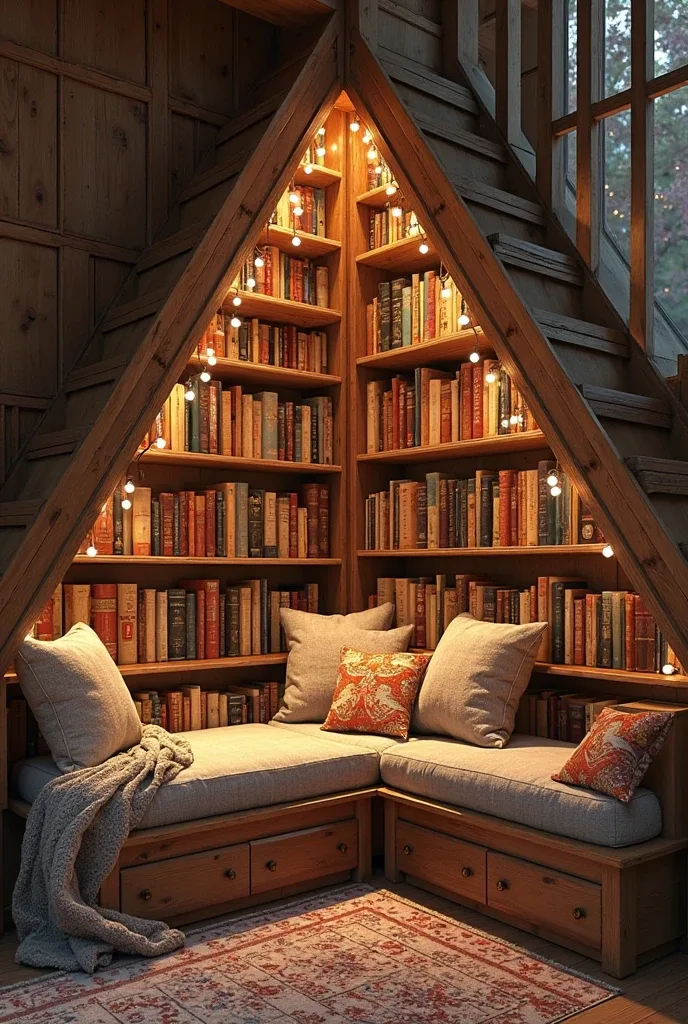
Envision that awkward triangular space under your stairs transformed into the reading nook of dreams with built-in cushioned seating that follows the slanted ceiling, warm fairy lights creating an enchanted atmosphere, floor-to-ceiling bookshelves lining every available wall surface, and soft throw pillows making the space infinitely inviting.
This micro sanctuary proves that the most unlikely spaces can become the most beloved areas of your home. The key is embracing the unique proportions rather than fighting them—that low ceiling creates an intimate, cozy feeling that larger spaces simply can’t replicate.
Cozy factor: Add under-seat storage for blankets and reading accessories, and include a small side table for tea or coffee within easy reach.
The Vertical Jungle Transformation

Imagine your shoebox room featuring a stunning living wall with floor-to-ceiling greenery cascading down an entire wall, hanging planters maximizing every vertical inch, a simple twin bed positioned against the opposite wall, and enough walkway space to navigate while the plant wall creates incredible depth and natural drama.
What makes this approach so effective is how it uses plants to visually expand the space while creating a healthier indoor environment. The vertical garden becomes both art and air purification system, proving that tiny spaces don’t mean sacrificing natural beauty.
Green thumb tip: Choose low-maintenance plants like pothos, philodendrons, and snake plants that thrive in various lighting conditions and don’t require constant attention.
The Floating Storage Revolution
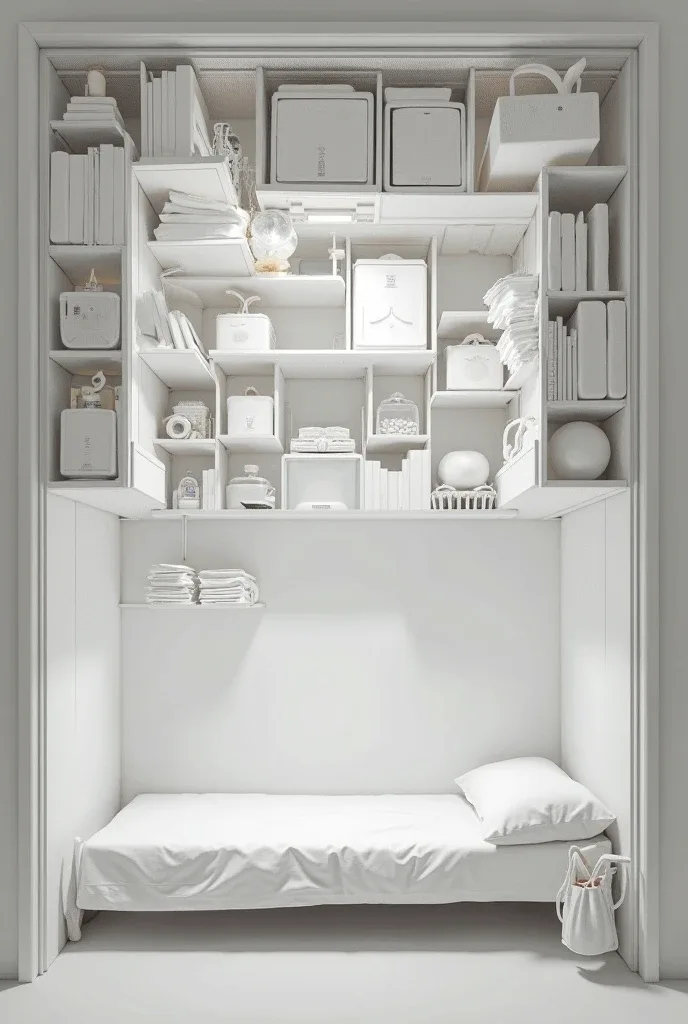
Picture your micro room featuring suspended nets and organizers hovering above your bed like a second floor, white storage containers keeping everything looking clean and intentional, bright lighting ensuring visibility of stored items, and every vertical inch transformed into functional storage space that doesn’t compete with floor space.
This gravity-defying storage system works because it utilizes the most underused area in tiny rooms—the ceiling. Instead of losing precious floor space to storage furniture, everything floats overhead while remaining easily accessible.
Organization wins: Label all suspended containers clearly and keep frequently used items in the most accessible positions.
The Mirror Universe Effect
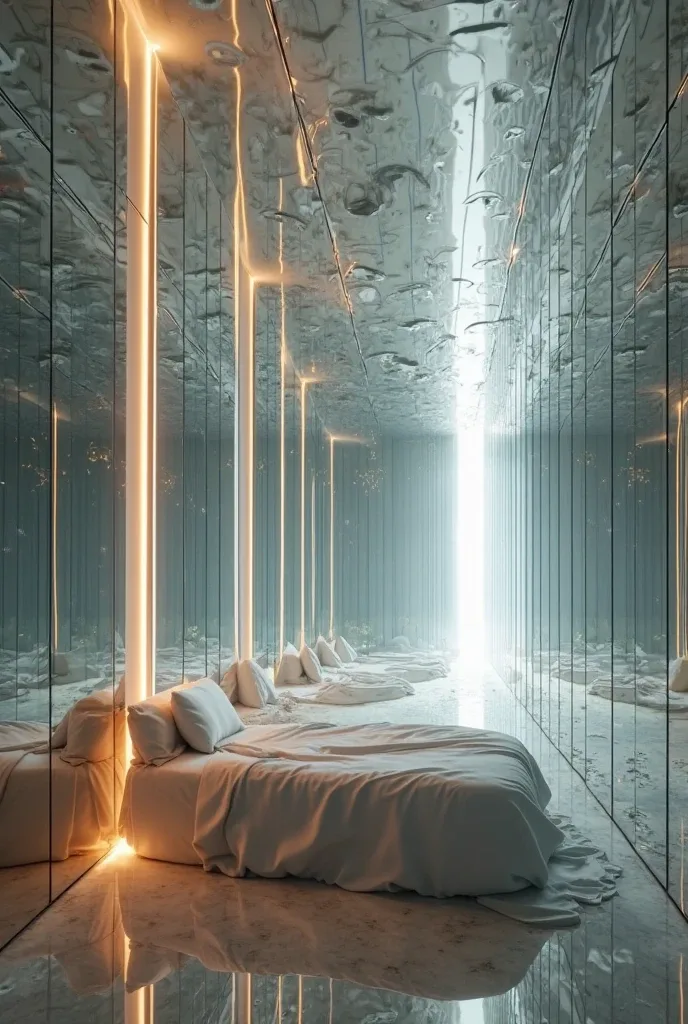
Envision your tiny space featuring a full wall of mirrors with LED backlighting adding depth and drama, natural light bouncing throughout the room to create the illusion of windows that don’t exist, and your single bed appearing to float in infinite space rather than being cramped against the wall.
The psychological impact of this mirror installation is profound—your brain interprets the reflection as additional space, literally doubling your room’s perceived size. The LED lighting adds a sophisticated touch while maximizing the light-bouncing effect.
Illusion magic: Position mirrors to reflect the most attractive parts of your room and avoid reflecting clutter or less appealing angles.
The Platform Power Play
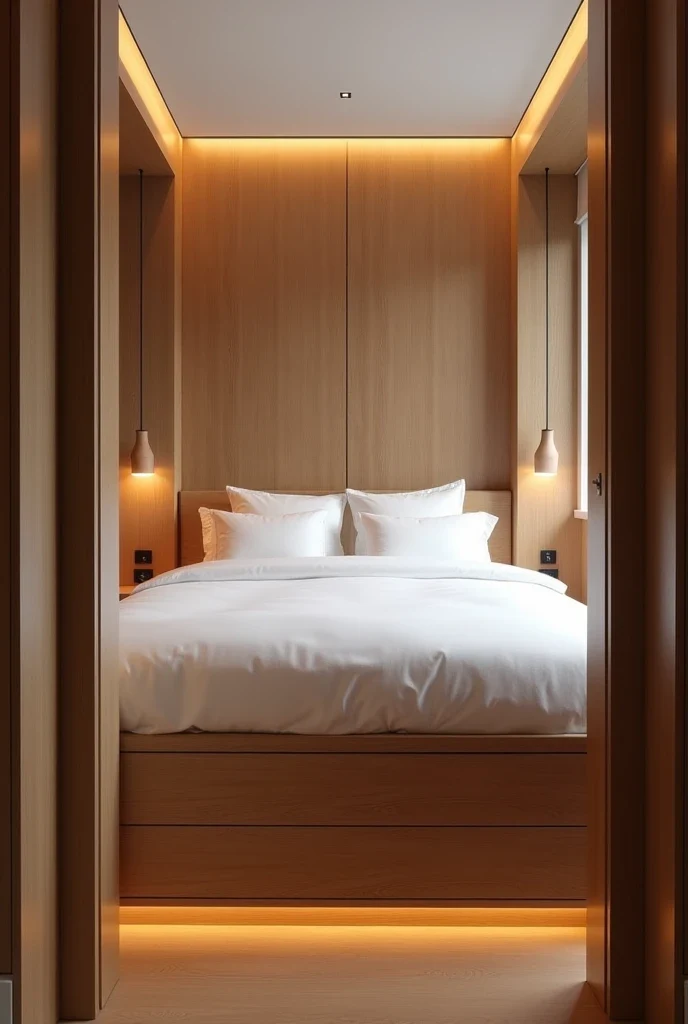
Picture your tiny room featuring an elevated platform bed with a hidden city of drawers built into its foundation, warm wood tones and cozy white bedding creating a luxurious atmosphere, and the bed occupying 90% of the floor space while somehow making the room feel complete rather than cramped.
What makes this platform solution so genius is how it eliminates the need for additional furniture by building storage directly into the bed’s foundation. Every square inch serves double duty without sacrificing style or comfort.
Platform perfection: Ensure drawer slides are high-quality for daily use and consider soft-close hardware to prevent slamming in your tiny space.
The Sliding Door Space Division
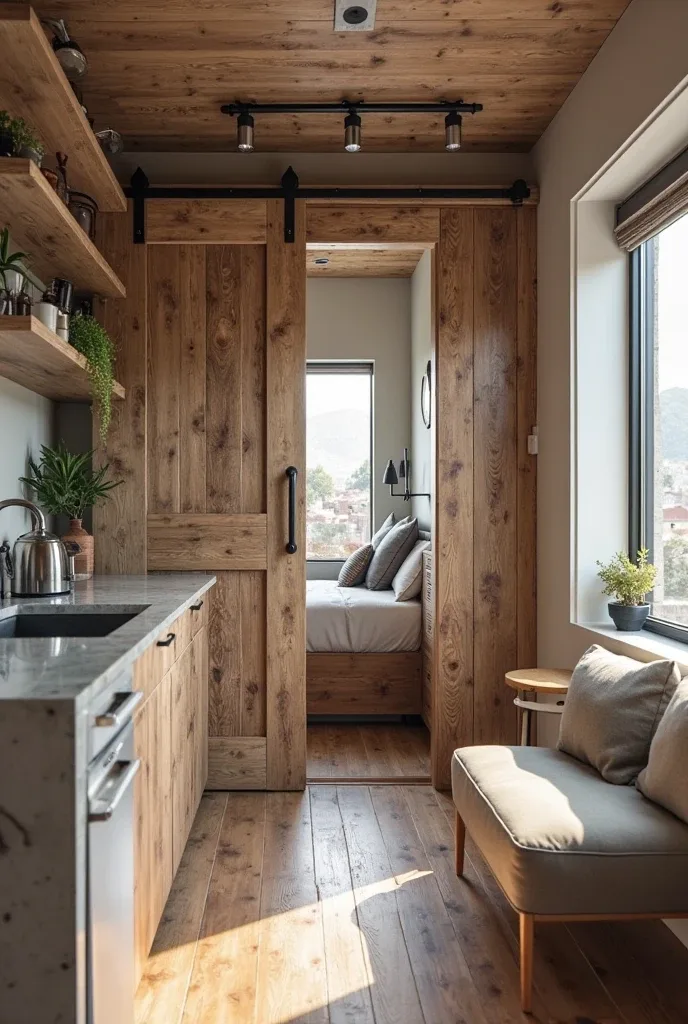
Imagine your micro studio featuring a beautiful reclaimed wood sliding barn door that becomes a moving wall, sliding to reveal or conceal different zones as needed, creating instant privacy and defined areas when closed, and allowing the entire space to flow together when open.
The flexibility of this solution is what makes it so appealing—morning yoga session, work-from-home setup, or evening movie night can all happen in the same space with just a slide of the door. It’s like having a transformer for your living area.
Flexibility factor: Choose door hardware that slides smoothly and consider the door’s position in both open and closed configurations during planning.
The Vanishing Desk Act
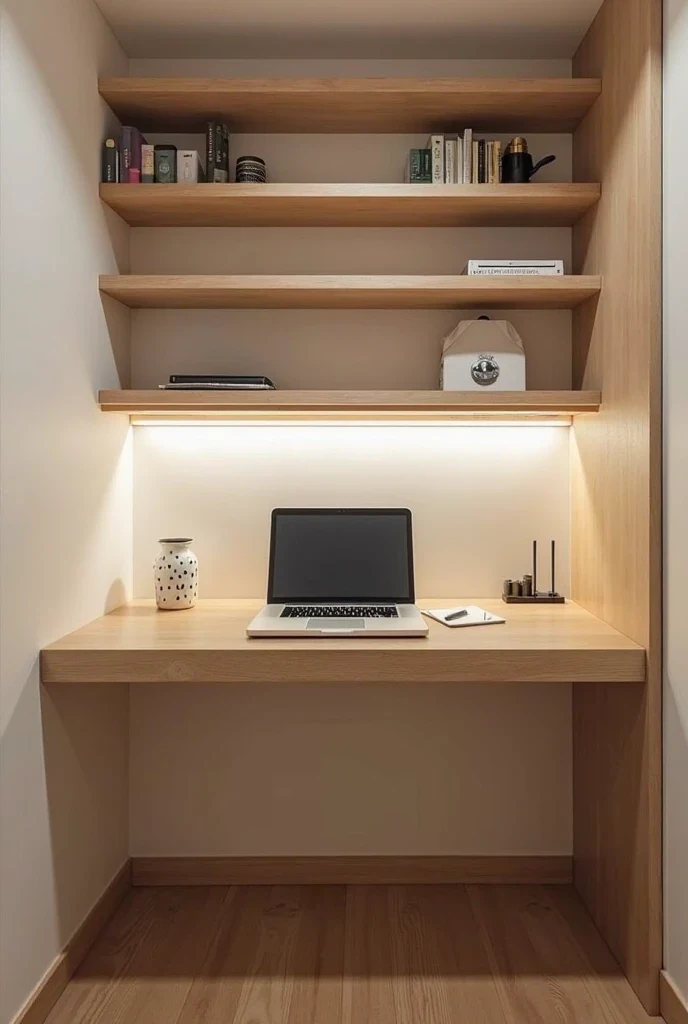
Envision your closet-sized room featuring a wall-mounted folding desk that creates a complete office setup when needed, floating shelves providing vertical storage for supplies, bright task lighting ensuring productivity, and the entire workspace disappearing when not in use to free up precious floor space.
This workspace origami approach proves that small spaces don’t have to sacrifice productivity. The dramatic transformation from bedroom to office happens in seconds, making the most of every square inch.
Productivity plus: Choose a desk size that accommodates your actual work needs and ensure the folding mechanism is sturdy enough for daily use.
The Vertical Study Revolution
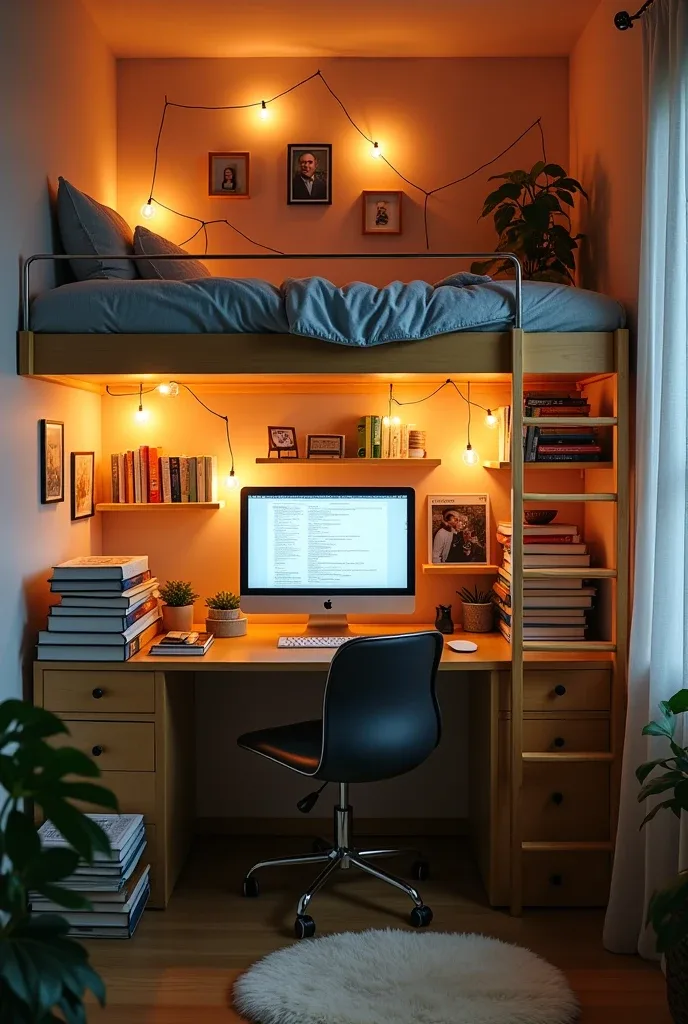
Picture your tiny room featuring a loft bed floating above a dedicated study zone, every inch of vertical space maximized for both sleeping and working, fairy lights adding magic to the confined space, and textbooks and supplies finding homes in every available nook and cranny.
This vertical solution challenges traditional assumptions about how space should work. Why spread horizontally when you can stack vertically? The trade-off of minimal headroom becomes worthwhile when you gain a complete bedroom and office in a closet-sized footprint.
Vertical victory: Ensure adequate ventilation in loft sleeping areas and consider the ceiling height carefully for both comfort and safety.
The Secret Storage Reveal
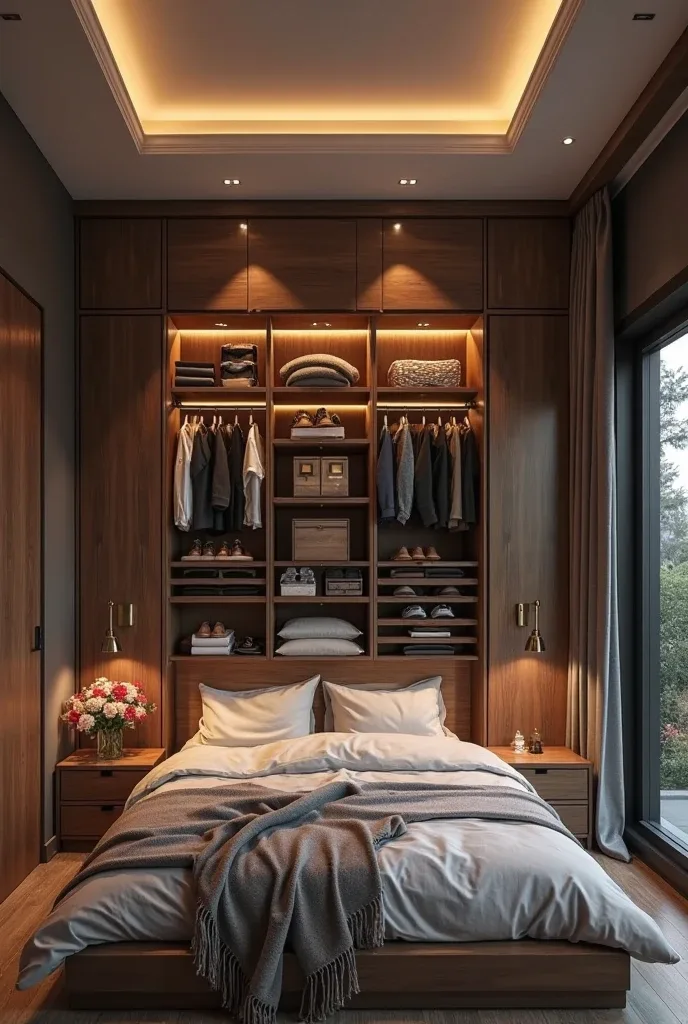
Imagine discovering that what appears to be a simple bed against the wall opens to reveal a perfectly organized hidden wardrobe, with the false wall sliding away to expose hanging clothes, shelves, and organization systems that would make a walk-in closet jealous, all accessible from the bed’s position.
This storage sorcery creates the drama of a hidden room within a room. The reveal never gets old, and guests are always amazed by the clever use of space. It’s functional magic that solves major storage challenges.
Hidden treasure: Ensure the sliding mechanism operates smoothly and consider lighting inside the hidden storage area for easy visibility.
The Canopy Storage Dream
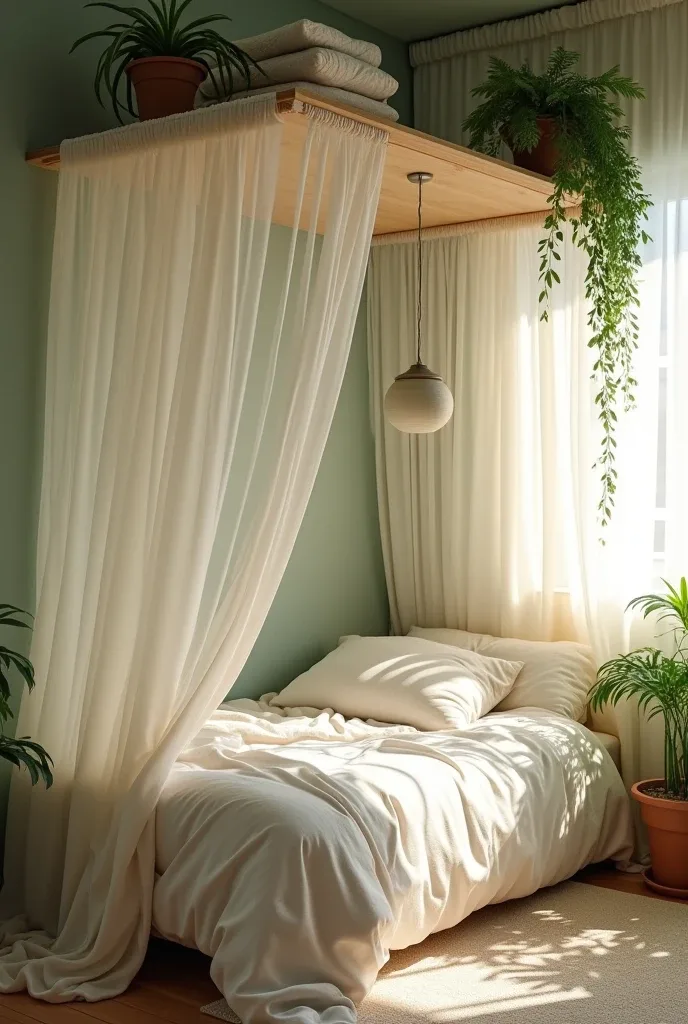
Envision your tiny room featuring a ethereal canopy bed with flowing fabric concealing ceiling storage, hanging plants cascading from the canopy framework, and storage bins disappearing behind beautiful fabric while creating the illusion of sleeping under the stars rather than in a cramped space.
What makes this solution so special is how it camouflages necessary storage behind something beautiful. The canopy creates visual height and softness while hiding practical elements that might otherwise make the space feel cluttered.
Dreamy details: Choose fabric that complements your color scheme and ensure the canopy structure is securely mounted to handle the weight of stored items.
The Multi-Level Masterpiece
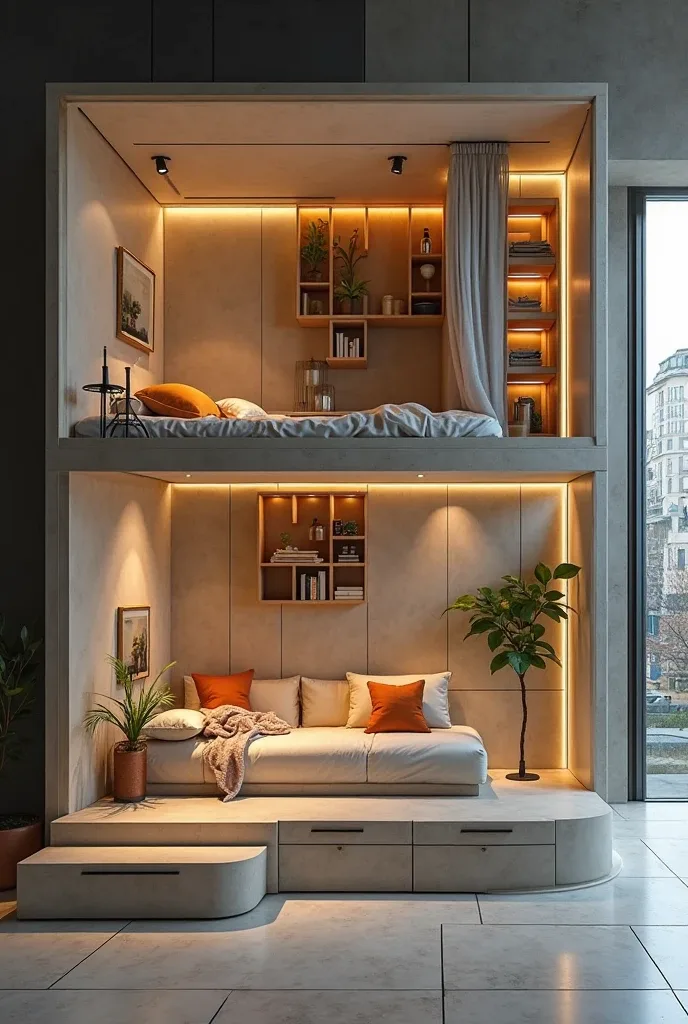
Picture your studio apartment featuring multiple platforms stacked like a beautiful, functional layer cake, with distinct zones for sleeping, seating, and storage, built-in storage hiding within each platform, and dramatic lighting highlighting the architectural elements to make the space feel sophisticated rather than cramped.
This vertical living approach redefines how studio apartments can function. Each platform creates its own microenvironment while contributing to the overall design aesthetic. The result is a space that lives much larger than its actual footprint.
Platform planning: Consider the function of each level carefully and ensure safe access between platforms with appropriate railings or barriers.
The Pegboard Paradise
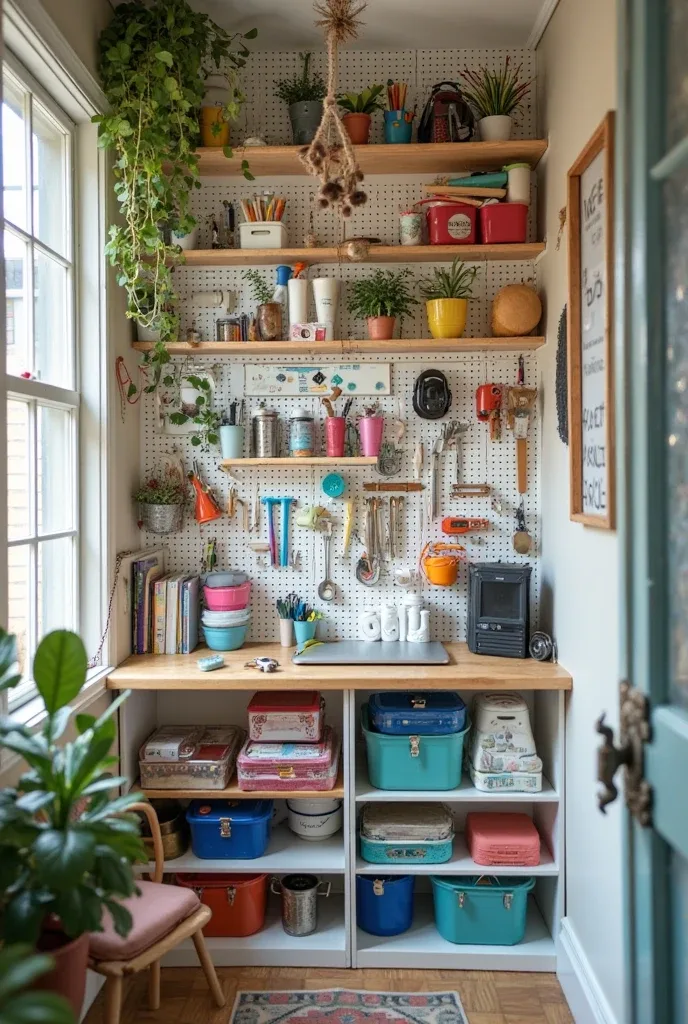
Imagine your closet-sized room featuring a full-wall pegboard installation that turns organization into art, with every supply, accessory, and plant finding a perfect home on the geometric grid, hanging plants adding life and softness to the system, and the aesthetic remaining clean and colorful while maximizing function.
The beauty of this wall-mounted organization is its adaptability—as your needs change, the pegboard configuration can evolve too. It’s organization that grows with your life while making the most of vertical space.
Organization artistry: Plan your pegboard layout before installation and choose accessories that complement your room’s overall aesthetic.
The Window Seat Wonder
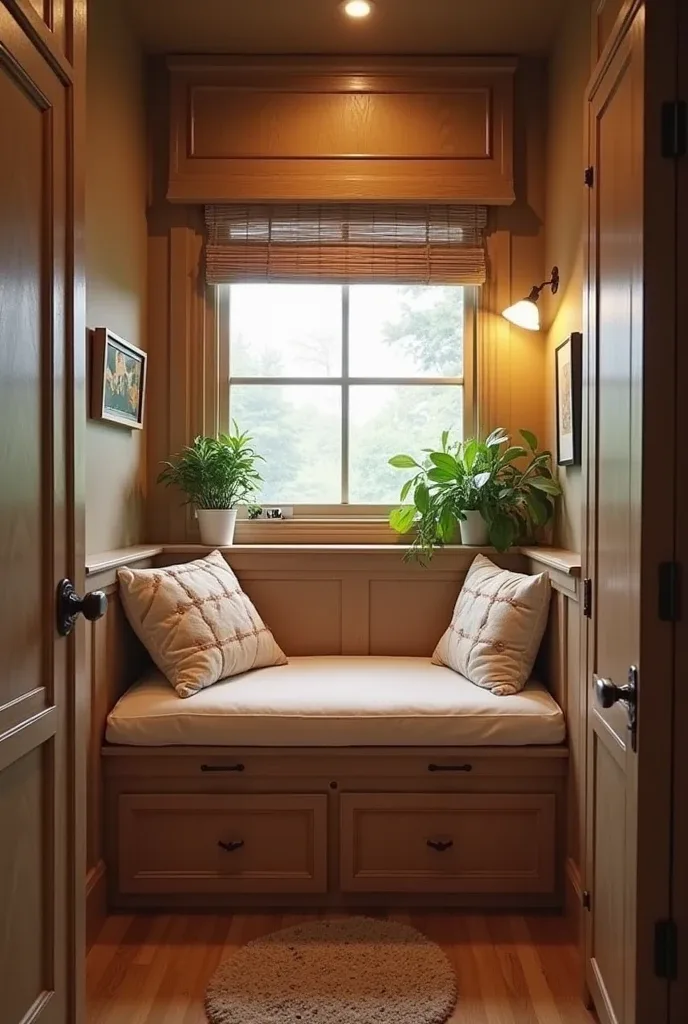
Envision your micro room featuring a built-in window seat spanning the entire width of the space, creating a cozy retreat with storage built into the bench base, plush cushions making the area infinitely inviting, and natural light from the window creating a bright focal point that makes the small space feel intentional.
Sometimes the best use of a tiny room is to embrace its scale completely. By making the seating element fill the space entirely, the room feels designed rather than constrained. The proportions work together instead of fighting each other.
Proportional perfection: Customize cushions to fit perfectly and choose storage solutions that maximize the base while maintaining comfort.
The Magnetic Future
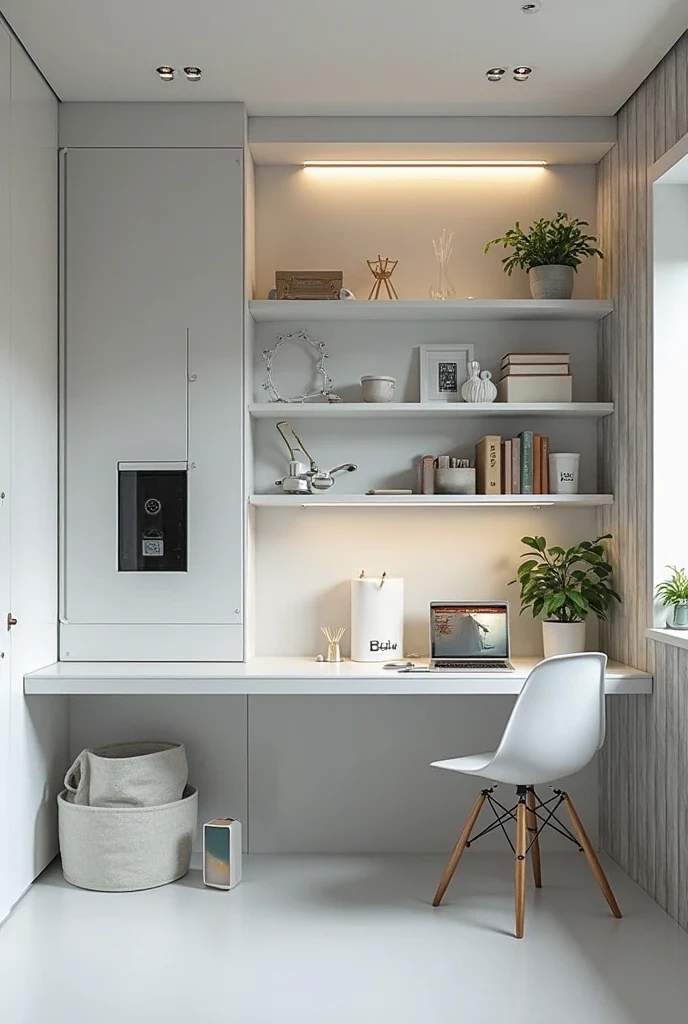
Picture your tiny space featuring a sleek magnetic wall storage system with metal containers hovering on the wall surface, creating clean lines and maximum flexibility, the aesthetic feeling futuristic and sophisticated, and storage that appears to float while providing serious organization power.
This cutting-edge approach to storage defies traditional constraints while creating visual lightness that makes tiny spaces feel larger. It’s storage that looks like it belongs in a space station—exactly the kind of forward-thinking these micro spaces deserve.
Future functionality: Invest in high-quality magnets and containers that will maintain their hold over time and choose a magnetic surface that complements your decor.
Embracing the Tiny Space Revolution
Here’s what these 15 transformations teach us: tiny spaces aren’t about limitations—they’re about discovering what’s possible when creativity meets necessity.
Every single solution required someone to look at constraints and see opportunities instead. Too small for separate rooms? Create zones that transform. No floor space for storage? Utilize walls and ceilings. Feeling cramped? Use light and mirrors to expand perception.
The magic happens when we stop seeing tiny spaces as problems to be solved and start seeing them as canvases for innovation. When every inch matters, every inch receives the attention it deserves. The result? Spaces that work harder, look better, and feel more intentional than their larger counterparts.
These transformations prove that exceptional design isn’t about square footage—it’s about vision, creativity, and the courage to try something different. Whether you’re dealing with a dorm room, studio apartment, or challenging corner of your home, the principles remain the same: think vertically, embrace transformation, and never underestimate the power of brilliant storage solutions.
The tiny space revolution is proving that when it comes to great design, size really doesn’t matter. What matters is the willingness to see possibility where others see problems.
Ready to transform your tiny space? Start with one element that excites you most and build from there. Sometimes the smallest changes create the biggest impact in making your space feel like home.

